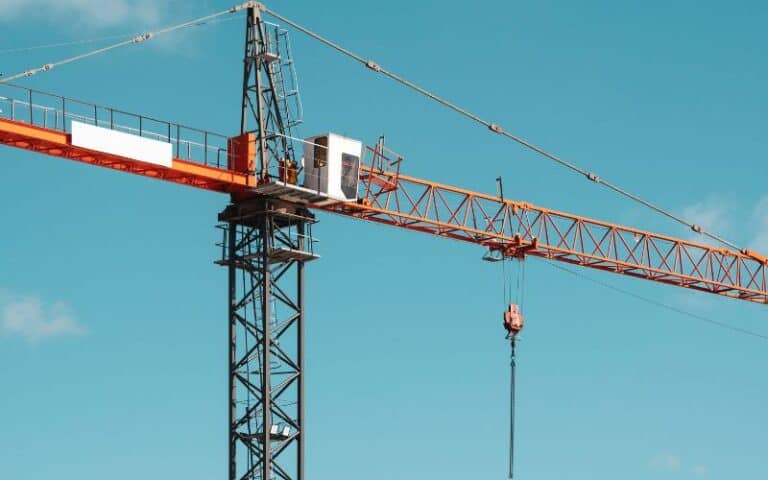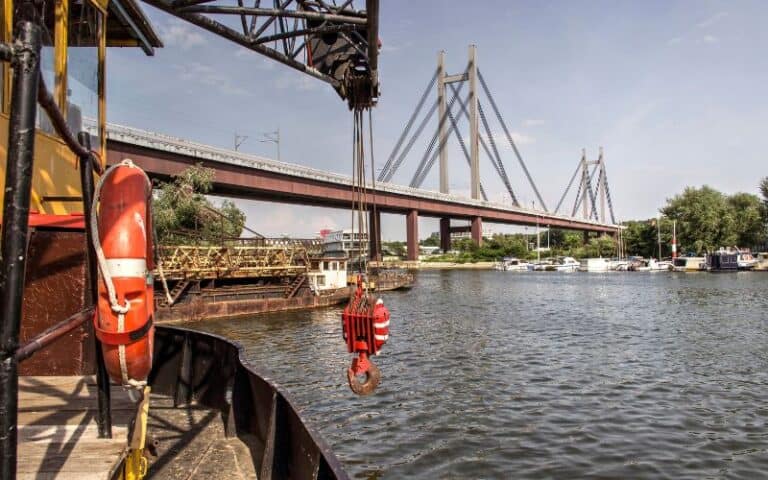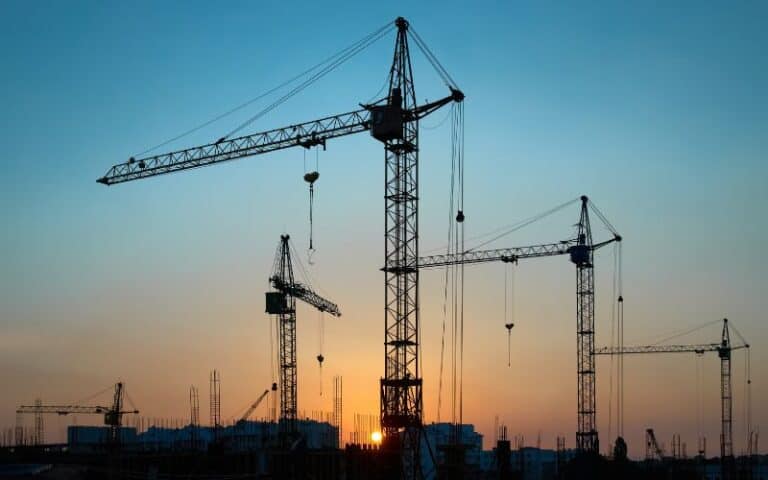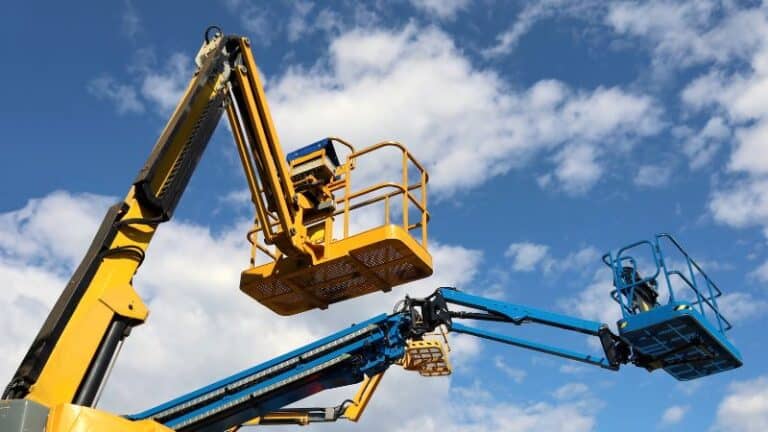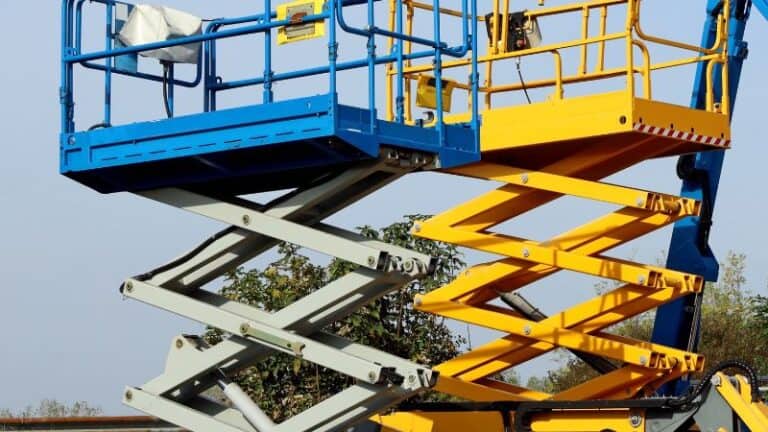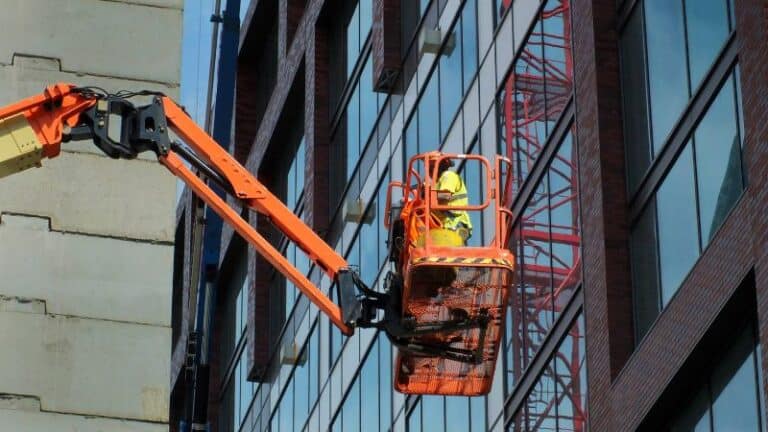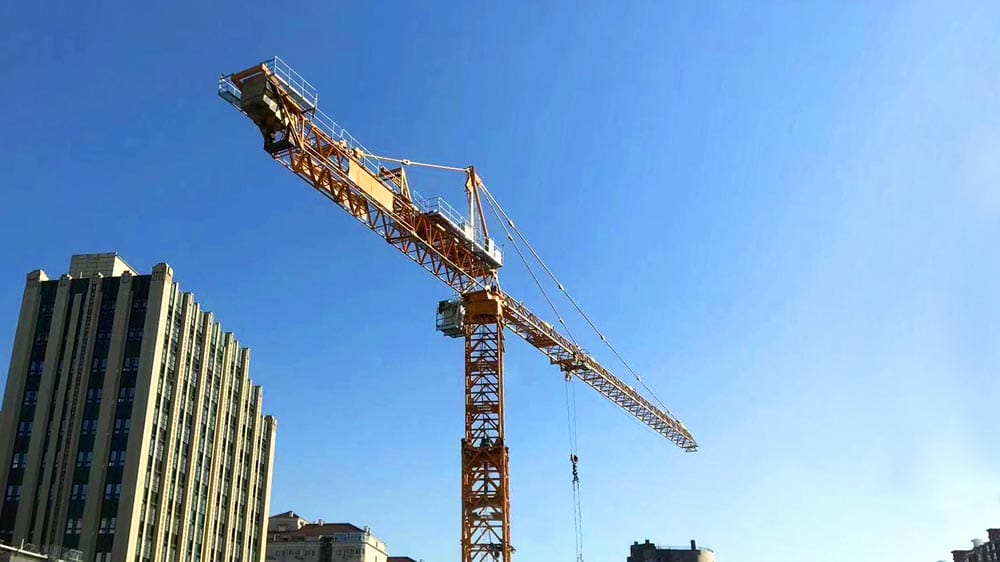
Overview of Tower Crane Operations
Tower cranes are a common sight on construction sites where high-rise buildings are erected. They are essential because they allow you to lift heavy materials and transfer them vertically and horizontally across the site with pinpoint precision.
Setting up the Tower Crane: Before you begin operations, the tower crane must be carefully assembled. This often involves attaching the base to a concrete pad that’s been pre-cast to ensure stability. Then, the mast extends from this base, giving the crane its height. The mast connects to the slewing unit, allowing the crane to rotate. A working arm, known as the jib, projects from the slewing unit and carries the load, while a shorter horizontal machinery arm contains the crane’s motors and electronics.
Operational Capabilities: Your tower crane’s operating capabilities depend on several factors:
- Height & Reach: The vertical and horizontal reach dictates how high and far the crane can move materials.
- Lifting Capacity: This is the maximum weight your tower crane can lift, which decreases as the load moves farther from the mast.
- Rotation: The slewing unit allows for a 360-degree rotation, providing full-circle access around the site.
Safety and Maintenance: To ensure safe operation, regular inspections as per ASME standards involve both frequent and periodic checks. Frequent inspections are daily visual checks of critical components like hoist and boom ropes, while periodic inspections are more comprehensive and schedule-based.
During operation, the tower crane operator, stationed in the cab located at the top of the tower, has a direct line of sight to the construction activity, orchestrating the movement and placement of loads with precision. It’s your responsibility to be vigilant in both the maintenance and operation of your tower crane to maintain efficiency and safety standards.
Types of Tower Cranes
Tower cranes are essential pieces of machinery on construction sites, used to lift and move heavy materials. There are several different types of tower cranes, each with unique designs and capabilities to suit different construction needs. The four main types are hammerhead tower cranes, Flat-top tower crane, luffing jib tower cranes, and self-erecting tower cranes.
Hammerhead tower cranes have a horizontal jib resembling a hammerhead that can rotate 360 degrees. They excel at lifting heavy loads to great heights, with long jib lengths for ample coverage area. However, they require a lot of open space for their large swing radius.
Flat-top tower crane features a flat roof structure for optimal suitability in high-rise construction. Its vertical and horizontal movement, coupled with high lifting capacity, ensures efficient handling of heavy materials. Fixed installation provides stability, and its flexibility adapts to diverse construction needs. Ideal for accelerating construction with fast lifting speeds.
Luffing jib tower cranes have an angled jib that can be raised or lowered to different positions. This allows them to operate efficiently in tight spaces with height restrictions. They also work well in windy areas where crane movement needs to be controlled. However, their lifting capacity may be lower than a hammerhead.
Finally, self-erecting cranes can set themselves up on site without assistance. Their compact size makes them ideal for tight spaces, but they have lower capacities than other tower crane types.
Design and Engineering
When you consider the safety and functionality of tower cranes, understanding the design and engineering aspects is crucial. These elements ensure the crane operates within its intended parameters and endures the stresses of construction environments.
Core Components of Tower Cranes
Mast: The mast, gives the crane its height and is critical for stability. It’s constructed from steel trusses, and each section is designed to provide maximum strength without excessive weight.
Jib: The long jib arm extends outward from the slewing unit and carries the load being lifted. It can be fixed length or telescoping.
Trolley: Your crane’s trolley runs along the jib, carrying the load. Precision engineering is necessary for it to move smoothly and efficiently, minimizing sway.
Counterweight: Situated opposite the jib, counterweights stabilize the crane during operation. They are designed based on the maximum intended load and the crane’s reach.
Electric Motors: These power the crane’s movements—hoisting, trolleying, and slewing. The selection of electric motors is based on required power output and durability in diverse conditions.
Tower Crane Engineering Principles
Stress Analysis: Every part of the crane is subject to rigorous stress analysis to ensure it can handle the specified loads plus additional factors like wind and equipment stress.
Safety Factors: Engineering includes redundancies and safety factors into the design, such as brakes that engage automatically when power fails.
Materials Selection: The right materials—typically high-grade steel—are chosen for their ability to endure loads and environmental stressors over time.
Safety Measures and Protocols
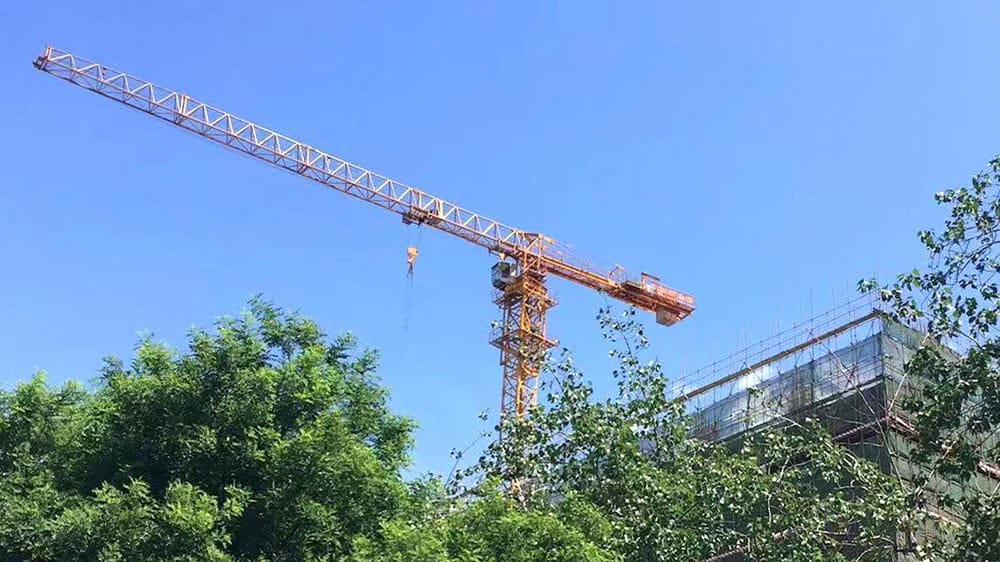
In maintaining and operating tower cranes, adhering to robust safety measures and protocols is critical for minimizing the risk of accidents and ensuring the welfare of workers. Each protocol is designed around the key principles of safety education, clear communication, and preventive action.
Operator Safety Training
To ensure the highest standards of tower crane safety, comprehensive operator safety training should be learned by every employee. This training covers topics such as:
- Understanding of crane components and their functions.
- Adherence to the Health and Safety Executive regulations.
- Proper use of safety devices.
- Recognition and reporting of potential hazards.
Training programs should be routinely updated to reflect changes in regulations and industry best practices.
Communications and Rigging Procedures
Clear and effective communication is essential to maintain crane safety on site. As an operator or a rigging worker, you’re responsible for understanding and following proper rigging procedures:
- Use hand signals or radios to communicate efficiently.
- Double-check alignments and secure all rigging attachments.
- Conduct regular inspections of rigging equipment.
Always prioritize clear communication to articulate operations and ensure everyone’s safety on the worksite.
Emergency Preparedness and Accident Prevention
Preventing emergencies and accidents requires a proactive approach:
- Familiarize yourself with the site-specific emergency response plans.
- Regularly review and practice evacuation procedures.
- Enforce safety protocols to prevent accidents and reduce potential injuries.
Remember, a well-prepared team is a fundamental layer of safety for every moment of crane operation.
Routine Maintenance and Servicing
To ensure the longevity and safe operation of your tower crane, routine maintenance and servicing are paramount. Regular inspections and maintenance can prevent wear on essential components, keeping your equipment in optimal condition.
Preventive Maintenance Schedules
Preventive maintenance is key to the health of your tower crane. You should establish and adhere to a maintenance schedule tailored to your crane’s usage and operational demands. Here’s what you need to include:
- Daily: Check for any visible wear or damage. Inspect the wire ropes for fraying, kinks, or signs of corrosion.
- Weekly: Examine all moving parts for proper lubrication. Ensure the crane’s geometry aligns with manufacturer specifications.
- Monthly: Test all safety devices and check for any structural deformities. Pay close attention to the mast, jib, and hook.
- Yearly: Conduct a thorough examination, possibly including disassembly, to inspect internal components like gear cases and couplings.
Make sure to document every inspection and maintenance activity.
Visual Inspection Practices
Visual inspections are your first line of defense against potential issues. When you perform visual inspections, keep an eye out for:
- Structural Integrity: Look for cracks, bends, or other damage to the crane’s structure.
- Wear and Tear: Inspect for worn-out ropes, trolleys, hooks, and shanks. Check for signs of rust and corrosion.
- Operational Components: Verify that all control mechanisms are functioning properly without irregularities.
Frequent and detailed visual inspections can catch issues before they escalate, minimizing downtime and repair costs.
Inspection Checklists
Daily and Periodic Inspection Requirements
- Operational Test: Conduct a functional test to ensure all movements possible with the control panel are working correctly.
- Safety Devices: Check all safety devices for proper operation, including limit switches and overload indicators.
Periodic Inspections:
- Comprehensive Assessment: Periodically, you must carry out a more extensive inspection that covers both visual and operational aspects, including a check of the electrical system and all moving parts.
Key Inspection Points for Tower Crane Parts
Structural Integrity:
- Inspect the mast, jib, and support structure for any structural deformities, fatigue cracks, or loose connections.
Mechanical Parts:
- Hooks and Cables: Look for any distortion, excessive wear, or damage to hooks, cables, and wire ropes.
Electrical Components:
- Examine wires and electrical components for damage or wear. This includes checking for frayed wires and loose connections.
- Control Panel: Ensure that the control panel functions correctly without any faults and that all labels and operational markings are legible.
Using inspection checklists tailored to tower cranes ensures that you address all crucial components systematically and maintain operational integrity. Remember, keeping up with regular inspections is not just about compliance, but also about ensuring the safety of operators and onsite workers.
Tower Crane Compliance and Regulations

Compliance:
- OSHA Standards: Your tower crane operations must comply with the Occupational Safety and Health Administration’s regulations, specifically 1926.1435 for tower cranes.
- Engineer Approval: Foundations and support structures for tower cranes must be designed by the manufacturer or a registered professional engineer.
Regulations:
- Specific Hazards: Address specific hazards as detailed in § 1926.1404(h)(1) through (9).
- ASME B30.3 Standards: Follow the American Society of Mechanical Engineers (ASME) B30.3 standards for construction tower cranes and permanently mounted tower cranes.
Documentation:
- Log Keeping: Maintain a crane log that details inspection and maintenance reports, in line with CSA Standard Z248-17 for Tower Cranes.
It’s important to keep in mind that safety regulations can vary between countries and regions. To guarantee compliance and peace of mind, please consult our team of professionals for jurisdiction-specific guidance. Our experts can provide more detailed information to help ensure your hoisting operations adhere to all applicable local standards and best practices. Don’t hesitate to reach out for customized support that addresses your unique project needs and location requirements.
Incident Reporting and Analysis
When you’re involved in tower crane operations, knowing how to report and analyze incidents is crucial. Your primary goal is to enhance safety measures and minimize risks. Here’s a step-by-step guide on handling this delicate matter:
- Immediate Response: After any incident, your first step is to ensure the safety of all personnel. Secure the area and provide medical attention if needed.
- Preliminary Report: As soon as the situation is under control, file a preliminary report. This should include basic details like the date, time, and description of the incident.
- Detailed Analysis:
- Collect Data: Gather information from witnesses, inspect the crane, and look into environmental conditions.
- Identify Causes: Assess the root causes, which may range from mechanical failure to operational errors.
- Health and Safety Executive (HSE) Notification: In case of serious accidents, it’s crucial to notify the HSE as mandated by law.
- Logging Information: Maintain a log of the incident to help in future safety planning. This includes:
- Personnel involved
- Detailed descriptions of the incident
- Outcomes and injuries
- Risk Mitigation: With the data collected, identify any new risks or hazards that need to be addressed to prevent reoccurrence.
Environmental Considerations When Operating Tower Cranes
When operating tower cranes, you need to be mindful of environmental factors such as weather conditions and the stability of the ground they are erected on. These elements deeply influence the safe operation and longevity of cranes.
Impact of Weather on Operations
The weather has a significant impact on tower crane operations. For instance:
- High Winds: When wind speeds exceed manufacturer recommendations, you must halt crane operations to avoid accidents.
- Temperature Extremes: Sub-zero temperatures can reduce the performance of your crane, potentially freezing its components, while extreme heat might lead to overheating.
- Precipitation: Rain and snow can affect visibility, making it hazardous to operate cranes. They can also impact the integrity of load-bearing structures over time.
Grounding and Stability Measures
For stability and grounding, it’s crucial you understand the specific demands of your building site. Some key considerations include:
- Base: Your crane should be anchored to a solid foundation, typically large concrete blocks or a concrete pad, to ensure stability.
- Leveling: The crane must be leveled correctly to maintain balance and prevent undue stress on the crane’s structure.
Ground Conditions: Regularly assess the ground conditions around your crane. Soft earth or unstable ground can compromise the crane’s structural integrity.
In conclusion, implementing a rigorous maintenance and inspection program is crucial for the safe operation of tower cranes. Adhering to the manufacturer’s schedule and using qualified technicians helps catch any issues before they cause downtime or accidents. By having replacement parts on hand and thoroughly documenting all work, companies can minimize disruptions to critical construction timelines.
The standards in this article are set according to the United States. However, these standards and procedures can differ based on the country and region.
This is merely a general outline of some ideal practices, yet compliance standards are always changing. For more personalized or current advice based on your geographical location, do not hesitate to reach out to IHURMO’s specialists. We are capable of pinpointing all relevant requirements.
Most importantly, the proper upkeep of these large machines protects both workers on the job site and the general public nearby. Following industry best practices and regulations provides assurance that tower cranes are functioning as designed.
For any questions about a crane inspection or maintenance plan, contact IHURMO – their experts are available to evaluate specific needs and ensure cranes are always in top working condition. Regular preventative measures according to the guidelines above will deliver lasting performance.

